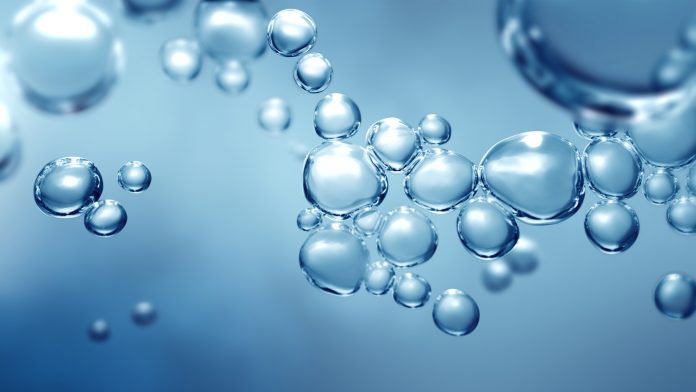Researchers from Linköping University are developing a renewable energy source from hydrogen gas produced from water and aided by sunlight.
Scientists have developed a nanoporous material that displays promising properties to obtain solar energy and split water for hydrogen gas production.
The new study has been published in the journal ACS Nano.
Jianwu Sun, senior lecturer in the Department of Physics, Chemistry and Biology at Linköping University and research lead commented: “New sustainable energy systems are needed to meet global energy and environmental challenges, such as increasing carbon dioxide emissions and climate change.”
Hydrogen gas is an energy dense element that can be used to generate electricity using fuel cells, and commercial applications such as hydrogen fuelled cars are already available.
When hydrogen is used to produce energy, pure water is the only product formed. In contrast, hydrogen production emits carbon dioxide; for every one tonne of hydrogen gas produced, nine to 12 tonnes of carbon dioxide are emitted.
Therefore, the researchers are hopeful that producing hydrogen gas by splitting water molecules and using solar energy will be a sustainable alternative to producing hydrogen, using renewable sources, and without generating carbon dioxide emissions.
As well as this, another advantage of this technique is the potential to convert solar energy to fuel that can be stored.
“Conventional solar cells produce energy during the daytime, and the energy must either be used immediately, or stored in, for example, batteries. Hydrogen is a promising source of energy that can be stored and transported in the same way as traditional fuels such as petrol and diesel”, said Sun.
However, splitting water using solar energy in order to produce hydrogen, has its complications. For example, finding cost-effective materials with the properties needed for the reaction that splits water (H2O) into hydrogen (H2) and oxygen (O2) through photo-electrolysis, is a challenge.
The main energy form in sunlight that aids the water splitting process is ultraviolet radiation and visible light. Consequently, a material is required that can efficiently absorb such radiation to create charges that can be separated and have enough energy to split the water molecules into hydrogen and oxygen gases.
Until now, most of the materials the scientists have explored, are either inefficient in the way they use the energy visible, or do not contain the properties needed to split water to hydrogen gas.
The researchers are now investigating cubic silicon carbide, 3C-SiC. They have produced a form of cubic silicon carbide that has many extremely small pores. This material, called nanoporous 3C-SiC, has encouraging properties that indicate it can be used to generate hydrogen gas from water using sunlight.
“The main result we have shown is that nanoporous cubic silicon carbide has a higher charge-separation efficiency, which makes the splitting of water to hydrogen much better than when using planar silicon carbide”, added Sun.









